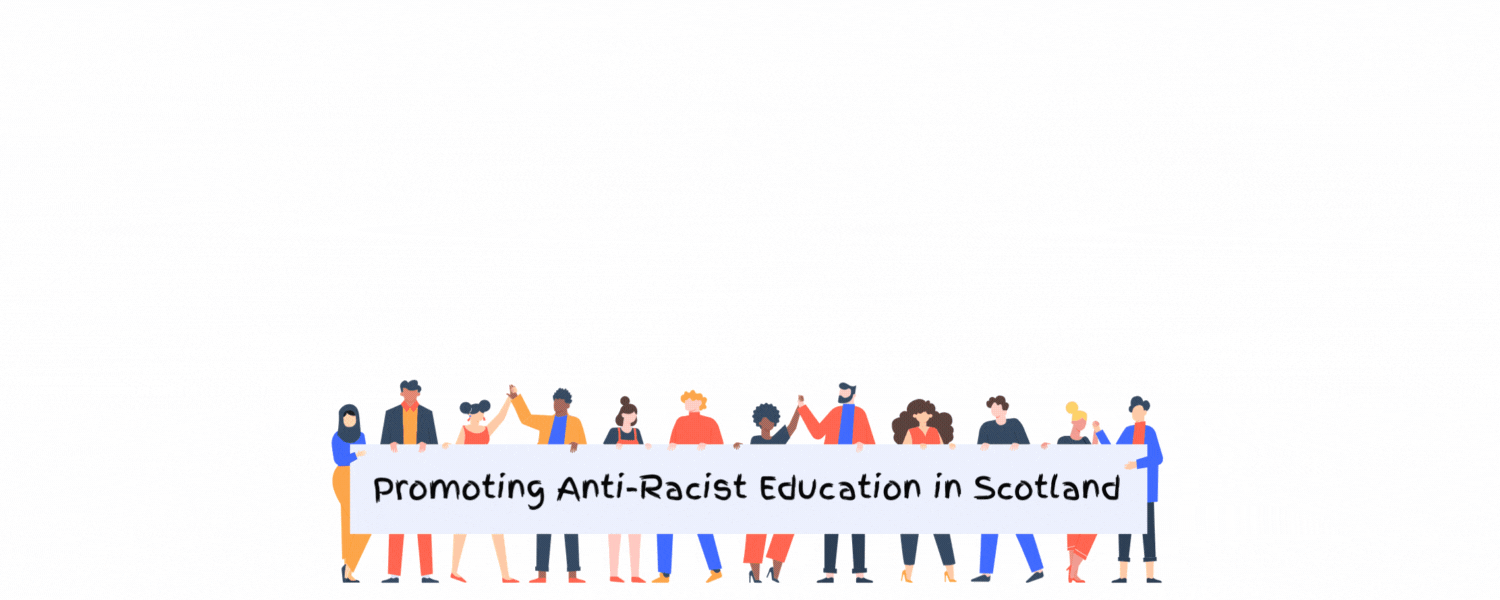Practitioner Considerations
Children should not be discouraged from noticing and discussing differences in skin colours. Psychologist Beverly Tatum’s research shows that children not only recognise race from a very young age, but also develop racial biases by ages 3 to 5 that do not necessarily resemble the racial attitudes of the adults in their lives. Not talking about race and racism sends a message to children that it is a taboo topic, no matter what age. Affirming children’s questions and comments about race is a powerful tool to avoid making them feel that conversations about anti-racism are negative. Open conversations about race at a young can also help reduce internalising racial stereotypes.
- Tatum, B. D. (2017) Why Are All the Black Kids Sitting Together in the Cafeteria?
- How to talk to kids about racism: An age-by-age guide
- Post-Workshop Cheat Sheet: Reflections on Difficult Conversations about Race
- STRATEGY: AFFIRM CHILDREN’S QUESTIONS Archives – Raising Race Conscious Children
- 100 race-conscious things you can say to your child to advance racial justice – Raising Race Conscious Children
| Second Level | |
| Experiences and outcomes | Possible activity/practice |
| I regularly select and read, listen to or watch texts which I enjoy and find interesting, and I can explain why I prefer certain texts and authors. LIT 1-11a / LIT 2-11a | Children explore texts which reflect different cultures, ethnicities and lived experiences. By engaging with various aspects of these texts they are able to consider how features such as character and setting are deployed to convey the writer’s ideas and key themes. By identifying with characters and their situation, children are able to develop empathy. All learners can learn more about the background and cultures of others.
Learners should be supported to develop their critical perspective around representation of characters, cultures and events. Alongside children practitioners should reflect on the classroom texts and resources used to ensure that they are not reinforcing racial biases and stereotypes. The learning environment should encourage them to:
|
| To show my understanding, I can respond to literal, inferential and evaluative questions and other close reading tasks and can create different kinds of questions of my own. ENG 2-17a | When engaging with a range of written and media texts focusing on social issues, children explore how cultural and racial diversity are represented. By asking and answering relevant questions, children are increasingly able to demonstrate an awareness of such issues and how they are conveyed through the writer’s exploitation of literary techniques.
Learners should be encouraged to think critically about the use of language and how it can be used as a tool to give power, take power or share power. They should be supported in using their critical literacy skills to take positive action for social justice. These Scot Dec materials were created by English teachers in Scotland. The first activity introduces the need to hear multiple stories of the world and our place in it. There then follows three units with a focus on climate change, refugees and how we engage with the ‘other’. First and Second Level The Silence Seeker Teaching Notes: This resource was designed by Glasgow City Council to support writing / reading strategies with a short book study. The book ‘Silence Seeker’ explores forced migration, empathy and friendship. First and Second Level Hair Love resources workbook: This resource was designed by Glasgow City Council to support writing / reading strategies with a short book study. The book ‘Hair Love’ explores embracing natural hair, the power of persistence and family love. |
| I can:
· discuss structure, characterisation and/or setting; · recognise the relevance of the writer’s theme and how this relates to my own and others’ experiences; and · discuss the writer’s style and other features appropriate to genre. ENG 2-19a |
Children continue to explore how authors choose to share a message through their stories. They watch or listen to authors describing how they encourage diversity through their writing and illustrations. Children continue to explore how diversity is featured in the characters and storylines of a range of age-appropriate texts. They are increasingly able to identify examples where the writer has provided a positive or powerful message about diversity.
Learners could be supported to consider whose story is being shared, who benefits from the story, who is missing from the story and why this might be the case. It might be appropriate to support learners to challenge a narrative being presented and seek out counter narratives that are informed by lived experience. For example a text written about race by a white author could be explored alongside a text written about race by a Minority Ethnic author. Why Frogs and Snakes Never Play Together activity: through folk tales, this lesson plan explores the topic of diversity and will spark a discussion about the topic of prejudice. These Scot Dec materials were created by English teachers in Scotland. The first activity introduces the need to hear multiple stories of the world and our place in it. There then follows three units with a focus on climate change, refugees and how we engage with the ‘other’. First and Second Level The Silence Seeker Teaching Notes: This resource was designed by Glasgow City Council to support writing / reading strategies with a short book study. The book ‘Silence Seeker’ explores forced migration, empathy and friendship. First and Second Level Hair Love resources workbook: This resource was designed by Glasgow City Council to support writing / reading strategies with a short book study. The book ‘Hair Love’ explores embracing natural hair, the power of persistence and family love. |
| I can persuade, argue, explore issues or express an opinion using relevant supporting detail and/or evidence. LIT 2-29a | As children become more aware of how diversity is reflected in texts, they continue to create their own texts which reflect their heritage and feature positive representations of diversity. For example, they take opportunities to promote diversity and reflect their own heritage as they create information texts, such as posters, leaflets, advertisements etc.
Learners could be supported to consider whose story is being shared, who benefits from the story, who is missing from the story and why this might be the case. It might be appropriate to support learners to challenge a narrative being presented and seek out counter narratives that are informed by lived experience. For example a text written about race by a white author could be explored alongside a text written about race by a Minority Ethnic author. Why Frogs and Snakes Never Play Together activity: through folk tales, this lesson plan explores the topic of diversity and will spark a discussion about the topic of prejudice. These Scot Dec materials were created by English teachers in Scotland. The first activity introduces the need to hear multiple stories of the world and our place in it. There then follows three units with a focus on climate change, refugees and how we engage with the ‘other’. |
| Having explored the elements which writers use in different genres, I can use what I learn to create stories, poems and plays with an interesting and appropriate structure, interesting characters and/or settings which come to life. ENG 2-31a | As children continue to become aware of how diversity is reflected in events and characters they read about, they find opportunities to create their own stories which feature positive representations. For example, through their own writing, children create their own characters and storylines which reflect their own heritage, diversity and positive role models.
When children are creating their own texts they should be supported to focus on humanising the voices and experiences of their characters. This is especially important if a learner is writing about a character with a different identity, cultural heritage or background to themselves. There is scope for learners to explore other identifies through their writing but they must be supported to avoid recreating stereotypes or tokenism. |


